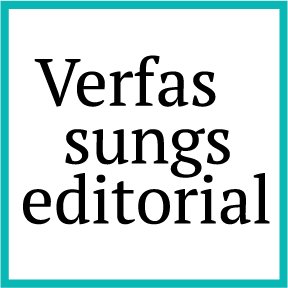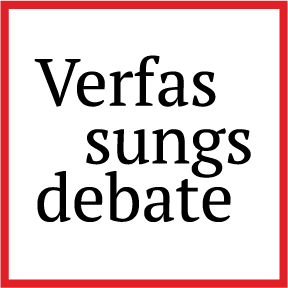A Blow to Our Constitutional System
Supreme Court decisions about so-called independent regulatory agencies such as the Federal Communications Commission and the Federal Trade Commission are seldom barn burners. They are generally too technical and filled with arcane jargon to hold the attention of anybody but the most dedicated court watchers.
So it was not surprising that when the court issued a preliminary order on Thursday upholding the president’s decision to fire members of the National Labor Relations Board and the Merit Systems Protection Board, the nation hardly stirred. But, make no mistake, it was not just another under-the-radar decision.
What a six-judge majority of the court did sets the stage for overturning a 90-year-old precedent, dramatically expanding presidential power, and rewarding President Donald Trump for assuming authority that, until now, he did not have. Because the court has not yet made a final decision on the merits, one can only hope that it will change direction after it has given the matter fuller consideration.
Before saying more about what the court did last week, let me explain why the “independence” of the agencies the president claims the right to control is so significant.
“The term ‘independent regulatory agency’ is,” according to the Regulation Writers Library, “used to refer to Federal agencies that have been established by Congress to have a certain amount of independence from the President.” They include “multi-member boards and commissions.” And although the president “appoints the members, he usually may not choose more than a bare majority from his own party.”
Congress charges them, according to the library, “to regulate specific areas of the economy, ensuring fair practices and upholding standards that affect the public welfare. They are established to operate free from political influence, allowing them to make decisions based on expertise and public interest rather than political pressures.”
Their independence helps “maintain objectivity and fairness in regulating industries like communications, finance, and consumer products.”
Here is where the rubber meets the road in the dispute that went to the Supreme Court. “Although the President typically may select the chairperson, he may not seek to remove members without ‘cause.’”
Congress created the first independent regulatory agency in 1887, the Interstate Commerce Commission, “as a result of mounting public indignation in the 1880s against railroad malpractices and abuses.”
Since then, as law professor Susan E. Dudley argues, “the number of regulatory agencies and the scope and reach of the regulations they issue have increased significantly.” That was especially true during the 1930s, when President Franklin Delano Roosevelt presided over the creation of many of those agencies.
Their number and jurisdiction have grown because neither economic markets nor private enterprises can adequately police themselves and ensure that the public is well protected. Independent regulatory agencies have grown because public officials once believed that the government has an important role to play in protecting and advancing the public interest and that disinterested experts would serve the public well.
Seems quaint, doesn’t it?
Of course, criticism of independent regulatory agencies antedates the Trump administration. Some critics bemoan what they call “regulatory capture” of agencies by the entities they are supposed to regulate. Others worry about a “fourth branch of government” operating with too little oversight and without constitutional sanction.
Justice Neil M. Gorsuch, who joined Thursday’s decision, recently published a book expressing his concern about regulations issuing from the “fourth branch” that he thinks are crushing American freedom.
Soon after the start of Trump’s second term, his administration set its sights on bringing the independent regulatory agencies to heel. On Feb. 18, the president issued an executive order directing that “independent regulatory agency chairmen … regularly consult with and coordinate policies and priorities with the directors of OMB, the White House Domestic Policy Council, and the White House National Economic Council.”
The order suggested that such consultation would ensure “accountability to the President, and through him, to the American people.” But even before issuing the executive order, he had flexed his muscle by firing NLRB chair Gwynne Wilcox, “the first Black woman to ever serve on the board in its 90-year history,” and Cathy A. Harris of the Merit Systems Protection Board.
He did so knowing that long-established Supreme Court precedents forbade it.
Wilcox and Harris sued and prevailed in federal district courts. As U.S. District Judge Beryl A. Howell of the District of Columbia explained in the Wilcox case, “The President’s interpretation of the scope of his constitutional power—or, more aptly, his aspiration—is flat wrong.”
Howell called what Trump did “a blatant violation of the law.”
On May 22, the Supreme Court, acting on an emergency petition from the administration and without full briefing or oral argument, stepped in. In an unsigned order, the court hacked away at its own well-established precedents and embraced the president’s expansive and dangerous vision of his own authority.
The court observed that when the case is considered on the merits, “the government is likely to show that both the NLRB and MSPB exercise considerable executive power.” It added, “because the constitution vests the executive power in the president…, he may remove without cause executive officials who exercise that power on his behalf, subject to narrow exceptions….”
In a startling show of where its sympathies lie, the court said, its decision “reflects our judgment that the government faces greater risk of harm from an order allowing a removed officer to continue exercising the executive power than a wrongfully removed officer faces from being unable to perform her statutory duty.”
Justices Elena Kagan, Sonia Sotomayor, and Ketanji Brown Jackson issued a stinging dissent, pointing out that the decision was a radical departure from a line of cases that “undergird … a significant feature of American governance: bipartisan administrative bodies carrying out expertise-based functions with a measure of independence from presidential control.” Those cases make it clear that “Congress has authority in creating such ‘quasi-legislative or quasi-judicial’ bodies to ‘forbid their [members’] removal except for cause.’”
The dissenting justices minced no words, saying that the president seemed determined “to take the law into his own hands” and wanted to overrule a judicial decision “by fiat.”
They pointed out that in a constitutional republic, “the President must likewise follow existing precedent, however strong he thinks the arguments against it—unless and until he convinces us to reject what we have previously held.”
The dissenters rightly concluded that the court’s decision “has foretold a massive change in the law” and that the court seemed eager “to now hand the president the most unitary, meaning also the most subservient administration since Herbert Hoover (and maybe ever).”
It is no wonder that the White House was quick to call the ruling “a major win” and use the occasion to denigrate “unelected bureaucrats” and “rogue judges.”
The president might count what the court did as a “major win,” but it is not a win for people who believe that expertise, bipartisanship, and sound policymaking are essential to this country’s well-being. If it is finalized, this decision will turn back the clock to a time when American government was run as a “spoils system,” with its attendant incompetence and corruption.
And in the hands of a would-be autocrat, the SCOTUS decision has delivered a serious blow to the constitutional system.
This text initially appeared on The Contrarian.



